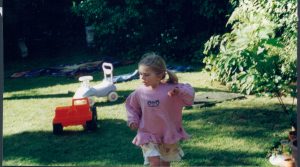In our current society Media and memory have formed a greatly symbiotic relationship. As American psychologist Henry L. Roediger III stated how ‘Memory is unmoored yet dominated by Media’.
For me, Nostalgia is intertwined with an odd sense of longing and a deep feeling of this overwhelming childlike joy. When you watch old videos or see past photographs of yourself, it’s like you can almost feel who you were at that time and place, clashed with the understanding that you can never really get all of it back. It could be feelings of innocence, excitement, happiness, or wonder. Or perhaps there are those feelings of frustration, confusion, or helplessness we could often endure as children.
As a child a lot of our emotions and experiences are simplified yet heightened at the same time. When we are excited we are over excited and when we are angry we can become furious and violent. I feel like this is something that always really strikes me when I watch old home movies of myself.
Family photo albums and videos allow a person to channel very distant yet familiar memories. Times and places we can vividly recall upon viewing but perhaps not moments we would have conjured up independently. This is why I find old home videos and photo albums so magical, they have the power to make you intimately remember a past that you may have forgot you even knew.
In her book titled ‘Media and Memory’ Joanne Garde-Hansen explores how the principle of photography itself ‘looks towards a future time when things will be different, anticipating a need to remember the past.’ I can so clearly recollect how many times my dad emphasised that he needed to capture our childhood through photography and film. He always stressed how it would all fly by so fast and we would want and need to see who and what we were all those years ago.
Within the publication ‘The uses and misuses of Memory’ Professor Marianne Hirsch expresses how photography’s binding relation to identity and unavoidable death is to attempt ‘to bring the past back in the form of a ghostly revenant, emphasizing at the same time, its immutable and irreversible pastness and irretrievability’ (1997:20) The love and the loss we experience when consuming either personal or public forms of old media is such a bittersweet sensation. As anthropologist Dominic Boyer argues ‘the frequency, ubiquity and aptness of the media placeholders have become powerful influences upon how we know the world around us, they become vastly important conceptual and experiential categories, the stakes from which we pitch our tents of knowledge and memory’
Vintaged modes of media just makes me feel something, like a sort of appreciation and affection for the impermanent condition of humans and the essence of the things we feel and the way we are. Watching classic films, listening to old radio shows, or seeing aged photographs expresses how timeless and intrinsic beauty, love, and emotion truly are. It really confirms that no matter how fast time flies by and what fashion or technological changes may have occurred, the fundamentals of being human remains primarily permanent.










